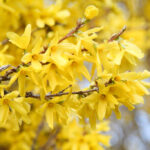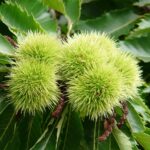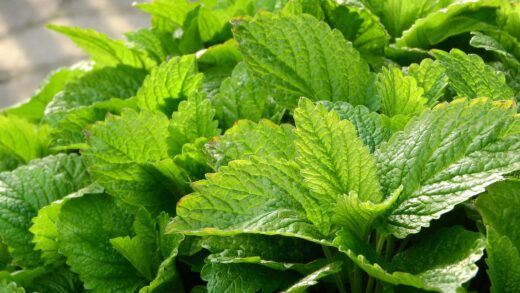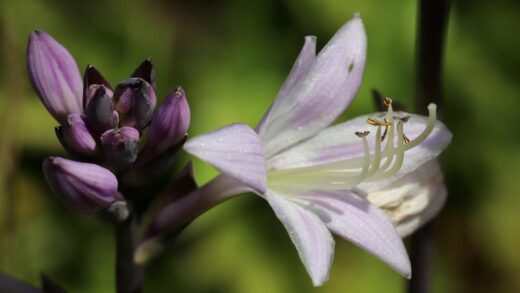Wintering the moss rose

The moss rose is cultivated as a tender annual in the vast majority of climates, meaning its life cycle is typically completed within a single growing season, from spring germination to being killed by the first hard frost of autumn. Its inherent lack of frost tolerance is a defining characteristic, rooted in its origins in the warm, temperate, and subtropical regions of South America. Consequently, for most gardeners, the concept of “wintering” the moss rose does not involve keeping the mature plants alive through the cold months, but rather planning for the next season’s display. The primary method for ensuring a return of these vibrant flowers is through seed collection.
As the vibrant flowers of the moss rose fade and drop off towards the end of the summer, they are replaced by small, inconspicuous seed pods. Allowing some of these pods to mature on the plant is the simplest and most natural way to perpetuate your moss rose patch. Once mature, these pods will dry and split open, releasing hundreds of tiny, dust-like seeds onto the soil below. In milder climates (USDA zones 9-11), these self-sown seeds may successfully overwinter in the soil and germinate on their own the following spring when conditions are right, creating a self-sustaining colony.
For gardeners in colder climates where self-sowing is less reliable due to harsh winter conditions, actively collecting and saving these seeds is a more dependable strategy. This process is simple and provides you with a free and abundant supply of seeds for the following year. It also allows you to control exactly where your moss rose will grow, rather than leaving it to chance. The collected seeds must be stored properly in a cool, dry, and dark place to maintain their viability until it is time to sow them indoors in late winter or directly in the garden after the last frost.
While overwintering the actual moss rose plant is not a common or recommended practice due to its annual nature and high failure rate, it is technically possible under very specific conditions. This would involve digging up the plants before the first frost, potting them, and bringing them indoors to be kept as houseplants in a very bright, sunny location. However, they tend to perform poorly indoors, often becoming leggy and attracting pests. Therefore, focusing on seed saving is by far the more practical and successful approach to ensuring you can enjoy the beauty of the moss rose year after year.
Understanding its annual life cycle
The classification of the moss rose as a tender annual is central to understanding how it should be managed at the end of the growing season. An annual plant is one that completes its entire life cycle—from germination, to growth, flowering, seed production, and finally, death—all within a single year. This life strategy is common for plants from regions with distinct growing seasons, allowing them to take full advantage of favorable conditions and ensure the survival of the species through seed production before unfavorable conditions (like frost or extreme drought) arrive.
More articles on this topic
The life cycle of the moss rose is driven by environmental cues, primarily temperature and daylight hours. Germination is triggered by warming soil in the spring, followed by a period of rapid vegetative growth. As the days lengthen and temperatures rise in summer, the plant shifts its energy into producing a profusion of flowers to attract pollinators. This flowering phase is the plant’s primary reproductive effort, and once pollination occurs, it begins the final stage of its life: developing seeds. The entire process is a race against time to create the next generation before the plant itself perishes.
The first hard frost in autumn acts as a definitive endpoint for the moss rose. The plant’s cells are not equipped to handle the formation of ice crystals, which rupture the cell walls and cause irreversible damage. The foliage and stems will quickly turn black and collapse, signaling the end of the plant’s life. This is a natural and expected part of its cycle. Attempting to protect it from this inevitable conclusion in a cold climate is often a futile effort against its inherent biological programming.
Therefore, end-of-season care for moss rose should focus not on preserving the individual plant, but on facilitating the continuation of the species. This means shifting your perspective from “winterizing the plant” to “harvesting the future.” By allowing the plant to complete its natural cycle and set seed, you are working with its life strategy, not against it. This understanding makes the process of clearing away the dead plants in the fall less of a loss and more of a final, necessary step in the annual gardening calendar, preparing the way for the next season’s growth.
The self-sowing method
In regions with relatively mild winters (generally USDA hardiness zones 8 or 9 and above), the moss rose can often perpetuate itself through a process known as self-sowing or self-seeding. This is the plant’s natural method of propagation, where it handles the entire process without any intervention from the gardener. As the flowers fade late in the season, they develop into small, capsule-like seed pods. When these pods dry and mature, they crack open, scattering a multitude of tiny black seeds directly onto the ground around the parent plant.
More articles on this topic
These fallen seeds will then lie dormant in the soil throughout the winter months. They are remarkably resilient and can withstand the cooler temperatures and moisture of a mild winter. When the soil begins to warm up again in the spring and the conditions for germination are met, these dormant seeds will sprout, often creating a dense and beautiful carpet of new moss rose seedlings. This can result in a charmingly natural and spontaneous garden display, with plants popping up in the same area year after year.
The success of self-sowing is highly dependent on your local climate and garden conditions. In colder zones (zone 7 and below), the harsh winter freezes and repeated freeze-thaw cycles can destroy the seeds or cause them to rot in the cold, wet soil, making this method unreliable. Furthermore, the location must remain relatively undisturbed over the winter. Heavy mulching, vigorous spring cultivation, or the application of pre-emergent herbicides in the area will prevent the seeds from germinating successfully.
If you wish to encourage self-sowing, the process is simple: do nothing. At the end of the season, resist the urge to immediately clear away the old moss rose plants. Leave them in place to allow the seed pods to fully mature and release their contents naturally. You can remove the dead plant material later in the fall or in early spring before the new seedlings emerge. While this method offers less control over the placement and density of the plants compared to manual seed collection, it is a wonderfully low-effort way to ensure a continuous display in suitable climates.
Harvesting and storing seeds
For gardeners in colder climates or those who prefer more control over their garden layout, manually harvesting and storing moss rose seeds is the most reliable method for wintering. The process begins in late summer and early autumn, as the flowering season begins to wane. Keep an eye on the spent blossoms; after a flower fades and its petals drop, a small, green, urn-shaped seed pod will form at its base. You must allow this pod to mature and dry on the plant. A mature pod will turn from green to a brownish or tan color and feel dry and brittle to the touch.
Timing the harvest is key. If you collect the pods when they are still green, the seeds inside will not be viable. If you wait too long after they have dried, the pods will split open on their own, releasing the seeds into the garden. The ideal time to collect them is when they are fully brown but just before they open. You can gently snip the pods off the plant with a pair of scissors and collect them in a paper bag or a small container. It is best to do this on a dry, sunny day to ensure the pods and seeds are not damp.
Once you have collected the pods, you need to extract the seeds. You can do this by gently crushing the dry pods between your fingers over a piece of paper or a shallow dish. The pod will crumble, releasing a surprising amount of tiny, black, dust-like seeds. You will also have a lot of dried plant material, known as chaff. To separate the seeds from the chaff, you can gently blow across the mixture in the dish; the lighter chaff will blow away, leaving the heavier seeds behind. Alternatively, you can use a fine mesh sieve to sift the seeds out.
Proper storage is critical for maintaining seed viability. Before storing, ensure the seeds are completely dry to prevent mold. You can spread them out on a piece of paper in a well-ventilated room for a few days to air dry. Once they are thoroughly dry, place them in a small paper envelope or a tightly sealed glass jar. Label the container clearly with the plant name and the year of collection. Store the seeds in a cool, dark, and dry location, such as a refrigerator, a cool basement, or an unheated garage. Stored correctly, moss rose seeds can remain viable for several years.
















